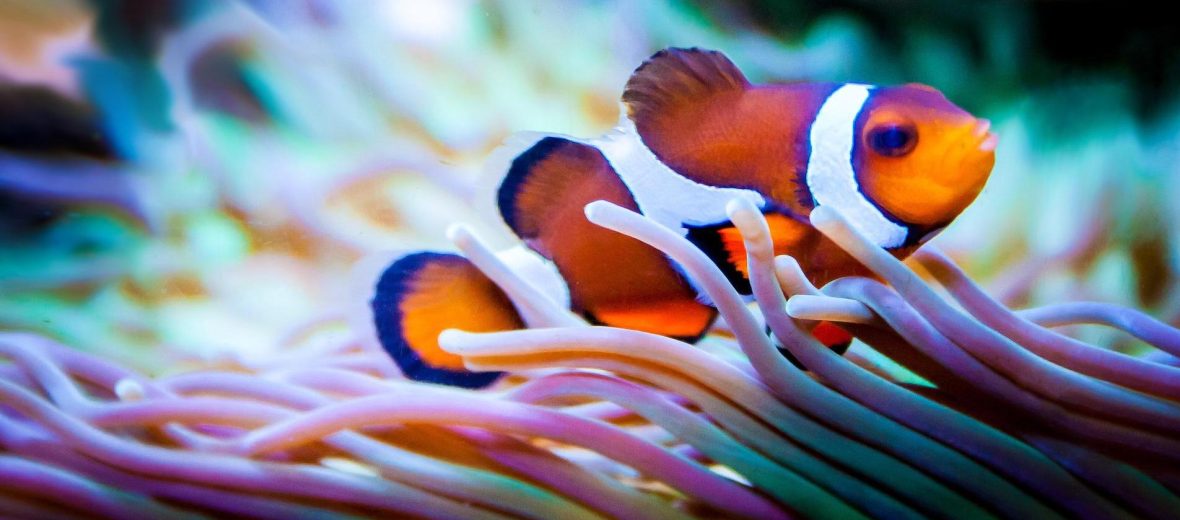
Clownfish are known for their colorful (clown-like) appearance and have been made popular in films like Finding Dory and Finding Nemo. They are also called anemonefish, due to their association with sea anemones. There are 28 known species of clownfish, and they come in a variety of colors, such as red, yellow, pink, black, brown and even multi-colored stripes. The clownfish you saw in the movies are actually called false clownfish.
First the Stats…
Scientific Name: Amphiprioninae
Weight: Up to 8 ounces
Length: Up to 4.3 in
Lifespan: Up to 10 years
Now on to the Facts!
1.) A clownfish actually has evolved to develop a mucus coating over their body to help prevent them from feeling the effects of the anemone’s stings.
2.) All anemonefish, including clownfish, are hermaphrodites. They are all born male, but they have the ability to turn themselves female! However, once the change is made to female, they can’t go back to being male. Sometimes the change is made while mating. Two males will become mates and the larger, dominant fish will become the female. Other times, one or more will become female if there are no females available in the area to mate with.
3.) The clownfish’s main predators are eels and larger fish.
4.) The relationship between clown and an anemone is called symbiosis, which means that both species benefits from each other. Clownfish eat anemone’s leftovers (pieces of fish, etc) and use the venomous tentacles to protect itself from various predators. The anemone uses the anemonefish for the removal of dead tentacles and to increase circulation of water (fast movement of fins increases aeration of water and amount of available food).
5.) Clownfish is a territorial animal that will fiercely defend its home (anemone) against other anemonefish!
But wait, there’s more on the clownfish!
6.) These fish are typically aggressive by nature. They will even attack divers if they try to approach their anemones.
7.) Females lay between a few hundred to a thousand eggs (depending on the species) and during the full moon. The eggs are placed on the undersides of rocks. The male takes care of them until they hatch. Incubation lasts between 6 – 10 days and ends with huge number of young clownfish that appear usually 2 hours after dusk.
Did you know…?
Anemonefish live in the shallow waters of the Indian Ocean, the Red Sea, and the western Pacific. They are not found in the Caribbean, Mediterranean, or Atlantic Ocean.
8.) A large number of anemonefish fry actually reach adulthood and this helps the overall population of the species, keeping it stable.
9.) Anemonefish fair better in the wild than in captivity. In the wild, they can live up to 10 years, but only 3-5 years in captivity.
10.) They are omnivores, meaning they eat both plants and animals. Their diet consists mainly of algae, zooplankton (tiny animals that live in water) and small crustaceans.



